If you would like me to assist with your project, please send an email to koshy@tek1.com.au with your project specifications. Kindly use ‘Raj’ as the subject header.
1. Barriers to Prevent Falls (Section 11.3.3)
- Purpose: Barriers are required on various elevated surfaces to prevent falls.
- Where Required: Install barriers along stairways, ramps, balconies, and any surface where a fall of 1 meter or more is possible. (see Figure 11.3.3a).
- Exceptions:
- Retaining walls (unless they are part of an access path). (see Figure 11.3.3b).
- Certain window openings covered by specific provisions. (see Figure 11.3.7 and 11.3.8).
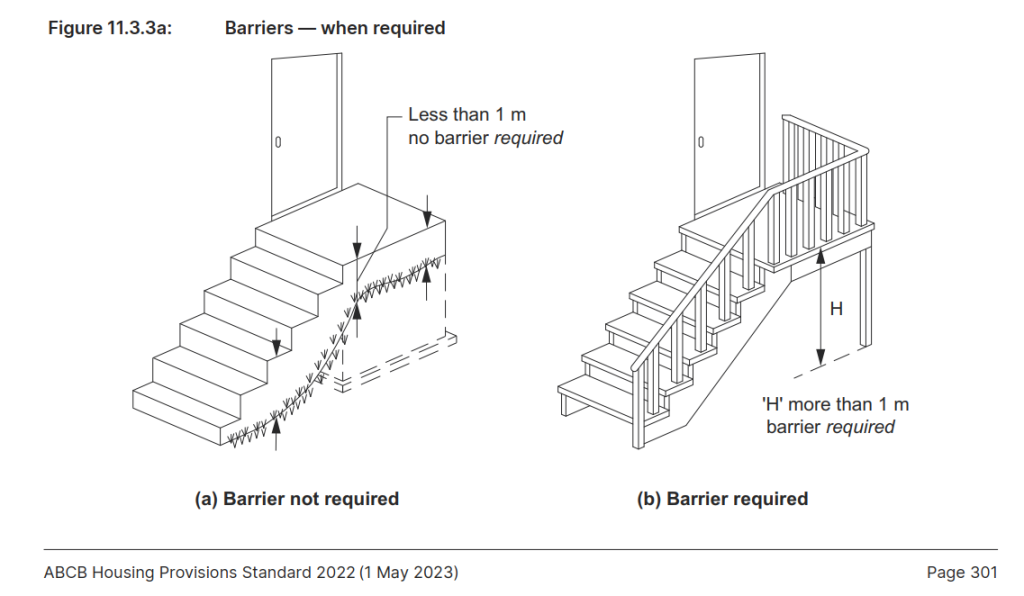
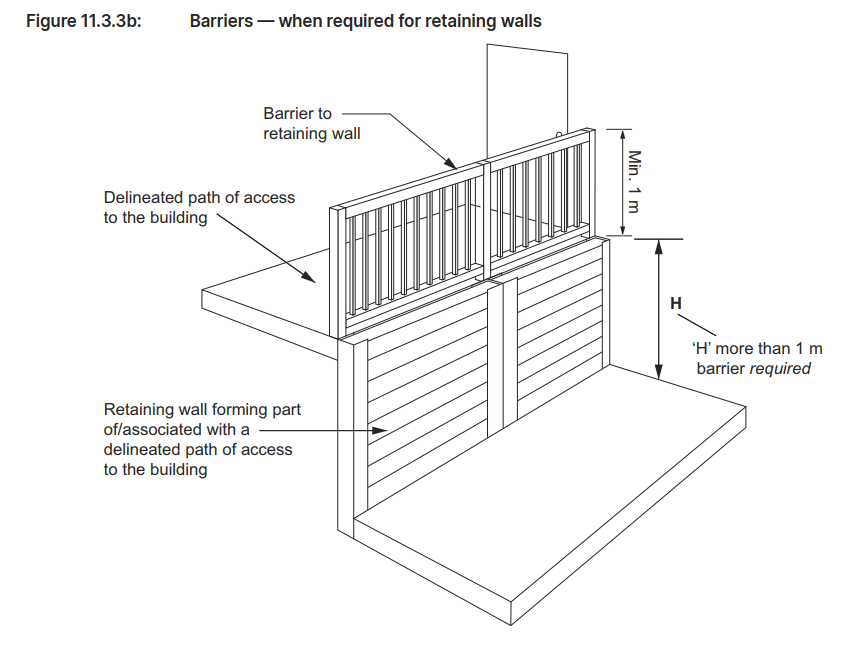
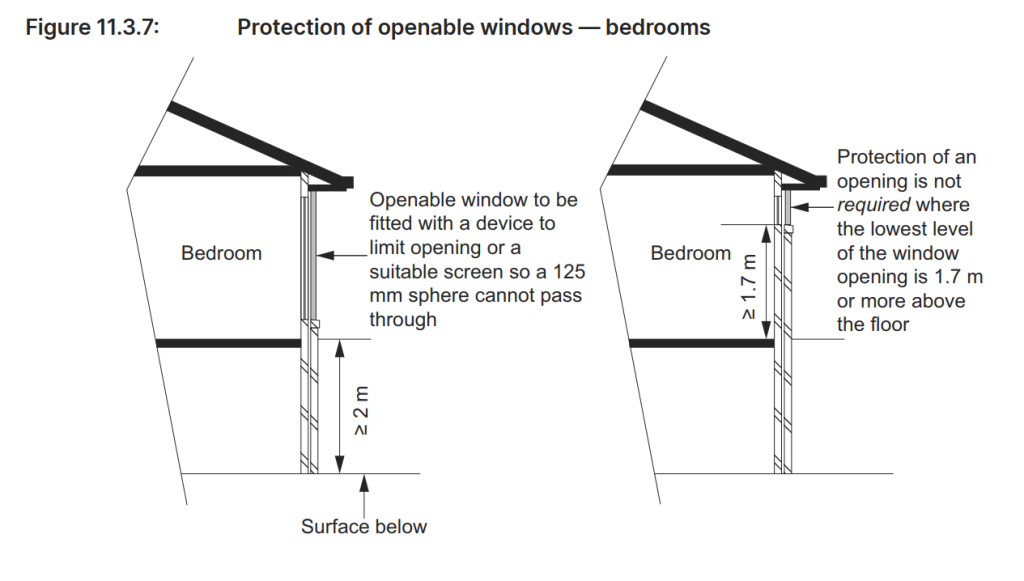
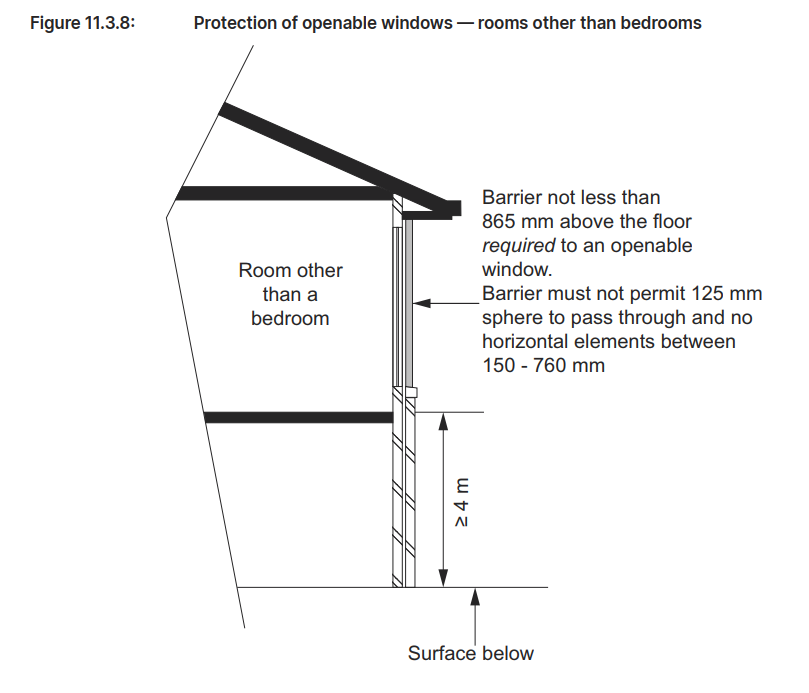
Australian Standard AS 1428.1.
2. Barrier Construction Standards (Section 11.3.4)
- Height Requirements:
- Stairs/Ramps: Minimum 865 mm above the stair treads or ramp floor. (see Figure 11.3.4a).
- Other Elevated Surfaces: Minimum 1 meter for landings, balconies, and similar elevated areas. (see Figure 11.3.4a).
- Design for Child Safety:
- Openings in barriers should not allow the passage of a 125 mm sphere, the opening is measured above the nosing line of the stair treads, minimizing the risk of children slipping through. (the opening is measured above the nosing line of the stair treads)
- Avoid horizontal elements between 150 mm and 760 mm above the floor, as they can facilitate climbing. (see Figure 11.3.4b).
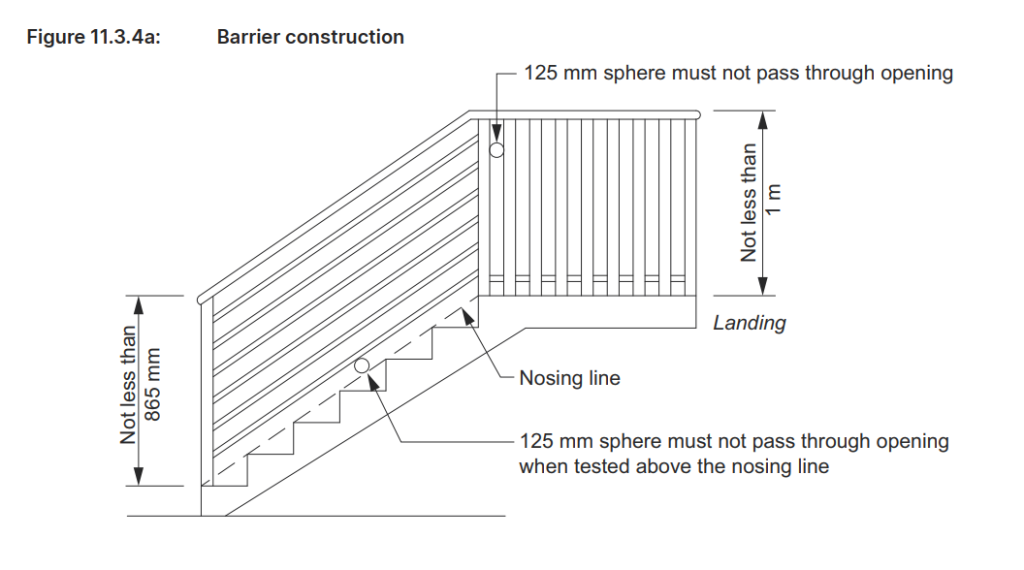
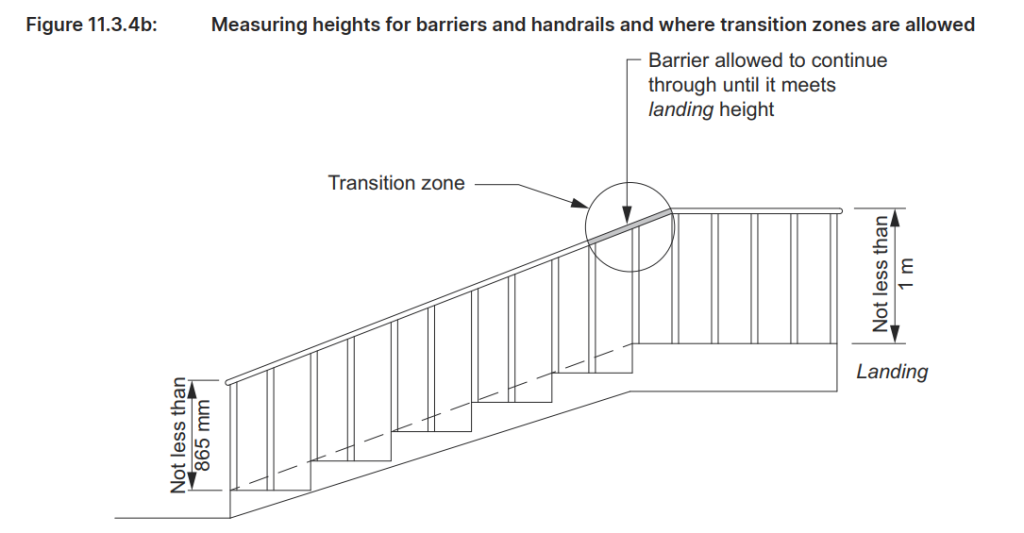
3. Handrail Requirements (Section 11.3.5)
- Placement: Handrails should be installed on at least one side of stairways or ramps, providing continuous support along their full length.
- Height: The top of the handrail must be at least 865 mm above the stair treads or ramp surface. (see Figure 11.3.4b).
- Continuity: Handrails should be continuous without interruptions, with exceptions for elements like newel posts.
- Exceptions to Handrail Requirements:
- Handrails are not necessary for stairways or ramps with elevation changes of less than 1 meter, on landings, or for winders with a newel post for support
This guide emphasizes key elements in designing safe, compliant buildings that align with the Australian Building Codes Board (ABCB) standards for fall prevention, especially around barriers and handrails. These regulations aim to protect all building users, especially vulnerable groups such as children, from potential fall hazards.
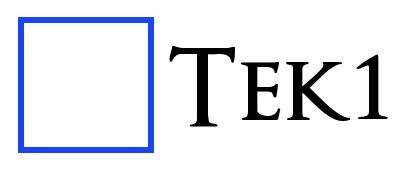
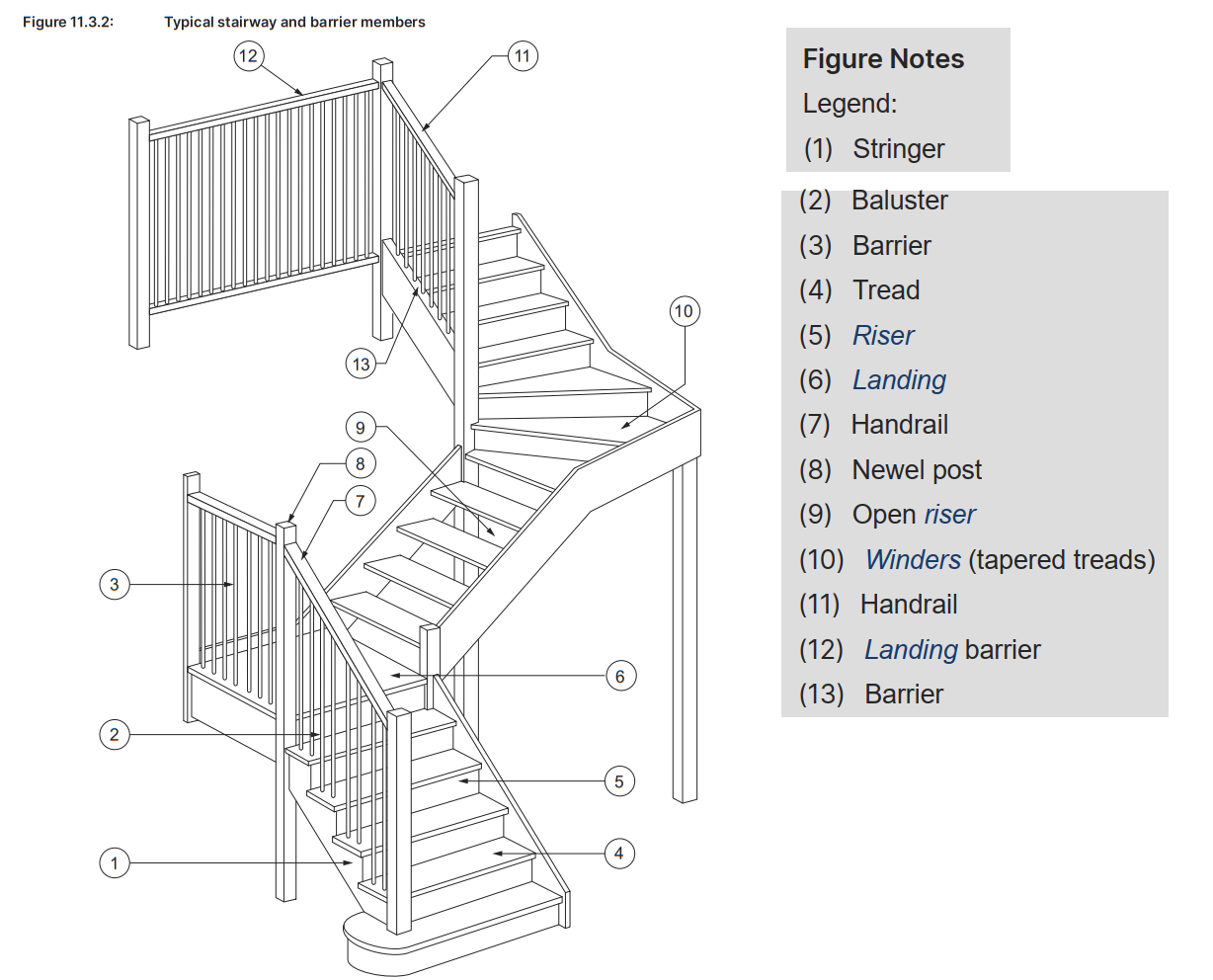
Leave a Reply